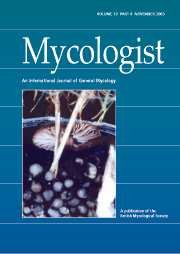Article contents
Useful Fungi of the World: the Ling-zhi - The mushroom of immortality
Published online by Cambridge University Press: 16 September 2002
Abstract
The 'Ling-zhi' (formerly 'Ling-chih') is familar to the whole of China, and it has played an important role in Chinese and Japanese culture for at least two thousand years. Images of the mushroom can be seen frequently depicted in the ancient, oriental art. It is used medicinally, with many claims of health-stimulating properties, and believed to have an effect on long life. Ling-zhi means the 'Mushroom (or herb) of Immortality' or the 'Celestial Herb', and it symbolises happiness, good fortune, good health and even immortality. In Japan it is called 'Mannen-take' ('10,000 year old Mushroom') or 'Reishi' ('Divine Mushroom'). The fungus is a hard bracket-fungus, which grows on oak, maple, elms and willows, often from the tree-roots. It is long been identified with the European 'Varnished Polypore' (Ganoderma lucidum (W. Curtis: Fr.) P. Karst.) but it is now known that this name has been applied to a number of closely related species.
- Type
- Original Article
- Information
- Copyright
- © 2002 Cambridge University Press
- 5
- Cited by


